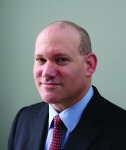The high-frequency trading party may be coming to an end. Lawmakers and market regulators in both Europe and Asia have made recent moves to limit HFT trading; Italy’s transaction tax and the Singapore and Hong Kong stamp taxes on equity trades come to mind. The European Union is still discussing a minimum resting period that would kill HFT altogether while U.S. regulators are focusing on preventing system failures as opposed to curtailing trading behavior. That said, there is still an active debate in the U.S. among regulators and academics about the effects of high speed trading on the retail investor.
The question of fair and equal access to not only focused on the markets themselves, but data and news feeds are getting the attention of legislators, too. Last year saw then U.S. Representative Ed Markey of Massachusetts calling HFT “a clear and present danger to the stability and safety of our markets” in a letter asking the SEC to reign in HFT trading. Rep. Markey is now Senator Markey and presumably he will continue his efforts in this area.

So what’s an HFT trader to do? Set up your own lobbying group, of course.
Last month, the Wall Street Journal reported that Kevin Madden, an advisor to the Romney 2012 presidential campaign, and Erik Smith, an advisor to both the 2008 and 2012 Obama campaigns, submitted paperwork to found the Modern Markets Initiative, a trade group headquartered in Washington D.C. and backed by four HFT firms. In addition to a website that promotes the contributions that HFT has made to the markets in terms of benefits to investors, the group is attempting to rebrand high-frequency traders as “automated professional traders.”
In the article, spokesman Peter Nabicht pointed out that, “One of the things that has been a problem with the phrase “high-frequency trading” is that it has become a catch-all for anything people don’t like.” The group’s backers include such HFT powerhouses as Global Trading Systems, Tower Research Capital and Hudson River Trading in New York, and Quantlab Financial in Houston.
HFT firms have lobbied Congress in the past to be sure. Using election contributions as a measure of attempts to influence policy, donations by industry executives have steadily increased from year 2000 when according to federal election reports they totaled a paltry $10,000 to over $16 million in the 2012 election cycle. In 2010, a group of proprietary trading firms formed the Principal Traders Group within the Futures Industry Association to address regulatory concerns around automated trading.
Until the Flash Crash in May of 2010, most retail investors probably didn’t give much thought to HFT. Together with the Knight Capital “Knightmare” that would occur in August 2012 and a number of headline-grabbing technical glitches in various electronic marketplaces, it didn’t matter whether there was an algorithm behind the failure as the general press conflated anything related to automated trading with HFT. Adding to the headlines were other stories highlighting suspicions that HFT traders were getting an unfair advantage both in information access and execution. Taken together, politicians had a new rallying point around protecting the retail investors from the supposed evils of HFT.
The Modern Markets Initiative website, modernmarketsinitiative.org, is an attempt to address the concerns of retail investors. With an introductory video touting how automated trading has increased access and lowered costs for everyone and text that includes such lines as “Investors, particularly the retail investor, have benefited from the modernization of both market technology and regulations, providing a marketplace with lower costs that is also more efficient, transparent and competitive.” The website is aimed squarely at John Q. Public Investor.
The jury is still out whether or not lobbying groups are adding anything more than noise to an important debate that speaks to the foundations of market infrastructure. But one thing is clear: HFTs are in the crosshairs.
Robert Stowsky is senior analyst for Aite Group.
(c) 2014 Traders Magazine and SourceMedia, Inc. All Rights Reserved.
http://www.tradersmagazine.com http://www.sourcemedia.com/






